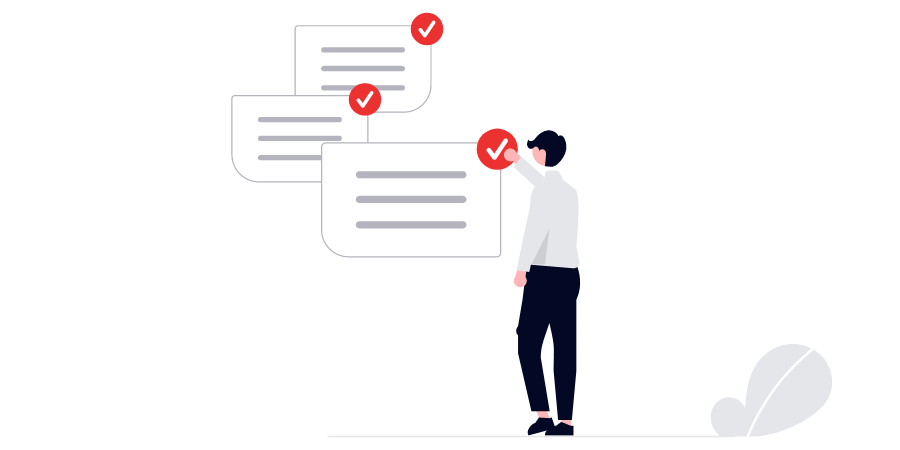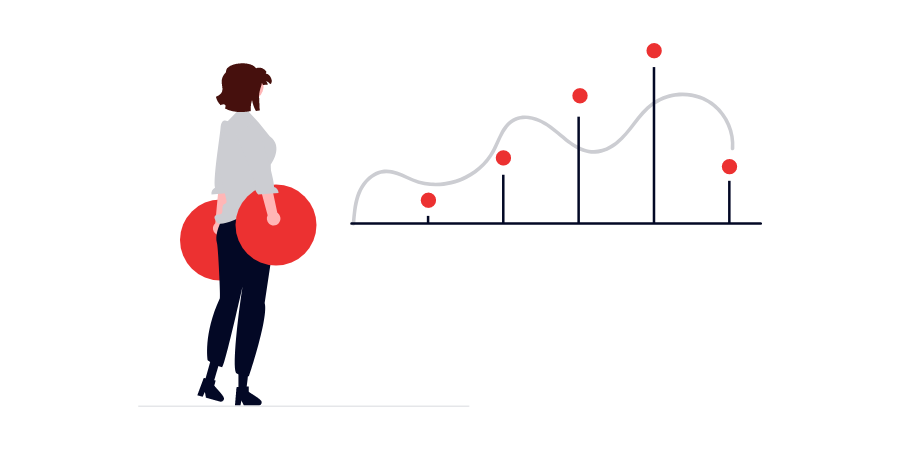Engagement is often one of those north-star metrics that many software companies use to determine whether users are actually getting any value from your product. It can highlight the difference between a product that users open once and forget, and one they can’t imagine living without. As product managers and leaders, our ultimate goal is to create experiences that solve problems… and one way to determine that is to see whether our users keep coming back, day after day.
But what exactly is product engagement? At its core, it’s about how users interact with your product at the most granular level. It’s not just about downloads or sign-ups – those are vanity metrics that don’t tell the full story. True engagement is about consistent, meaningful interactions that provide value to your users and, in turn, drive retention and growth for your business.
The landscape of product engagement has shifted dramatically over the past decade. As Marc Andreessen famously proclaimed, “Software is eating the world,” and that sentiment rings truer than ever today. With the proliferation of digital products in nearly every facet of our lives, user expectations have skyrocketed. We’re no longer competing just within our own product categories – we’re competing for users’ limited time and attention against every other digital experience out there.
This raises the stakes for product teams. We can no longer ship a feature and consider our job done. Success now depends on continuous improvement, adapting to changing user needs, and creating experiences that users genuinely want to return to. It’s about tracking usage to make informed decisions, but more importantly, it’s about understanding the ‘why’ behind user behavior.
In this essay, we’ll dive deep into the world of product engagement. We’ll explore frameworks for understanding engagement, like Sarah Tavel’s Hierarchy of Engagement, which provides a roadmap from core actions to network effects. We’ll look at how to measure engagement effectively, moving beyond surface-level metrics to truly understand user behavior.
We’ll also tackle the strategies that can drive engagement, from optimizing onboarding experiences to leveraging AI for personalization. But it’s not all smooth sailing – we’ll address the challenges that come with pursuing engagement, including the delicate balance between keeping users active and respecting their well-being.
As we look to the future, we’ll examine how product engagement is evolving. New technologies and changing user expectations are reshaping what engagement looks like, and as product leaders, we need to stay ahead of these trends.
Whether you’re leading a team at a startup or steering product strategy at a large corporation, understanding and improving product engagement is crucial. It’s the key to building products that don’t just solve problems, but become an indispensable part of users’ lives.
Let’s dive in…
Understanding the Engagement Framework

To truly grasp product engagement, we need a robust framework that goes beyond surface-level metrics. This is where Sarah Tavel’s Hierarchy of Engagement comes into play. Tavel, a general partner at Benchmark and former product lead at Pinterest, developed this framework to help product teams focus on what really matters when it comes to user engagement.
The Hierarchy of Engagement is like a pyramid, with each level building on the one below it. At the base, we have the core action – the fundamental interaction that defines your product’s value. For Facebook, it might be adding friends. For Uber, it may be booking a ride. For Spotify, it could be playing a song. This core action is the heartbeat of your product, the thing users come back to do again and again.
But identifying this core action isn’t always straightforward. As Tavel points out, it’s important to pick the right action – and one that scales for enough users. Tavel discussed Pinterest as an example. In its early days, the team wasn’t sure whether to focus on following, liking, or pinning. They eventually realized that pinning was the action that best encapsulated the value of their product and drove user retention.
Once you’ve nailed down your core action, the next level of the hierarchy is about retention. This is where things get interesting. It’s not enough for users to perform the core action once – you want them coming back regularly. The key here is to create what Tavel calls “accruing benefits.” Your product should get better the more a user engages with it.
Think about how Spotify’s recommendations improve the more you listen, or how your Instagram feed becomes more relevant the more accounts you follow and interact with. These accruing benefits create a virtuous cycle: the more a user engages, the more valuable the product becomes, which in turn drives more engagement.
But the pinnacle of engagement, the top of the pyramid, is network effects. This is where your product becomes truly sticky. Network effects occur when your product becomes more valuable to each user as more people use it. LinkedIn is a prime example – its value to you increases exponentially with each new connection in your professional network.
Now, you might be thinking, “That’s great for social networks, but what about my B2B SaaS product?” The beauty of this framework is its versatility. Even if you’re not building a social platform, you can still apply these principles. Your core action might be creating a document or analyzing data. Your accruing benefits could be AI-powered suggestions that improve over time. And your network effects might come from shared templates or collaborative features.
The key is to think creatively about how these principles apply to your specific product. Understanding this framework gives you a roadmap for improving engagement. If you’re struggling with retention, you might need to work on your accruing benefits. If you’ve got good retention but growth is slow, it might be time to focus on network effects.
But remember, this isn’t a one-time exercise. As your product evolves and your user base grows, you may need to reassess what constitutes your core action or how you’re building accruing benefits. The landscape of digital products is always changing, and with it, user expectations and behaviors.
By grounding your engagement strategy in this framework, you’re setting yourself up for long-term success. You’re not just chasing vanity metrics or short-term growth hacks. Instead, you’re building a product that becomes more valuable to users over time, creating a sustainable engine for growth and engagement.
Measuring and Analyzing Product Engagement

When it comes to engagement, what gets measured gets managed. But in a world awash with data, it’s easy to get lost in a sea of metrics that don’t actually tell you much about how engaged your users truly are. As product leaders, our job is to cut through the noise and focus on the metrics that matter.
Let’s start with vanity metrics. You know the ones I’m talking about – total downloads, registered users, or even monthly active users (MAU). While these numbers might look great in a board deck, they often mask the real story of user engagement. After all, what good is a million downloads if nobody’s actually using your app?
Instead, we need to dig deeper. One powerful approach comes from Pendo, which developed the Product Engagement Score (PES). This composite metric combines three key elements: adoption, stickiness, and growth. Adoption measures how many of your core features users are actually using. Stickiness looks at how frequently users return to your product. And growth tracks how well you’re acquiring and retaining users over time.
But even a metric like PES is just a starting point. The real insights come when you start slicing and dicing your data. This is where cohort analysis can be especially useful. By grouping users based on when they first used your product, you can track how engagement evolves over time. Are users who joined six months ago more or less engaged than those who joined last week? This kind of analysis can reveal whether your product is becoming more engaging over time or if you’re facing a retention cliff.
On Lenny’s Podcast, Sarah Tavel talked about the importance of tracking what she calls the “core action” of your product. This might be sending a message in a chat app, creating a document in a productivity tool, or making a purchase in an e-commerce platform. Whatever it is, this core action is the heartbeat of your product, and tracking its frequency can give you a clear picture of true engagement.
But here’s the thing: there’s no one-size-fits-all approach to measuring engagement. Your metrics need to align with your product’s unique value proposition. For a meditation app, success might mean users completing a 10-minute session daily. For a project management tool, it could be the number of tasks completed or team members collaborated with.
One trap I’ve seen many product teams fall into is focusing too heavily on aggregate metrics. While these can give you a high-level view, they often obscure important patterns. Instead, try segmenting your users based on different characteristics – perhaps by user type, acquisition channel, or feature usage. You might find that what looks like moderate engagement overall is actually a mix of highly engaged power users and barely-there occasional users.
Another powerful technique is to combine quantitative metrics with qualitative feedback. User interviews, surveys, and support ticket analysis can provide context to your engagement data. Maybe your usage numbers dropped last month, but your qualitative data shows it’s because users are becoming more efficient with your tool – that’s a win, not a loss.
As you dive into your engagement data, keep an eye out for leading indicators. These are early signs that can predict future engagement trends. For instance, if you notice new users are taking longer to complete their first core action, that could signal future retention issues.
Remember, measuring engagement isn’t just about tracking numbers – it’s about understanding the story behind those numbers. Why are users behaving the way they are? What’s driving changes in engagement over time? These are the questions that will lead you to meaningful product improvements.
Lastly, don’t forget to benchmark your engagement metrics against industry standards and your own historical data. This context can help you understand if you’re on the right track or if there’s room for improvement.
In the end, the goal of measuring engagement isn’t to produce pretty charts or impress stakeholders. It’s to gain insights that drive action. Every metric you track should lead to a potential decision or area of focus. If it doesn’t, it might be time to reconsider whether it’s worth tracking at all.
Strategies to Drive and Improve Engagement

Now that we’ve got a solid grasp on measuring engagement, we can focus on strategies that can move the needle. First things first: onboarding. It’s your product’s first impression, and we all know how crucial those can be. A great onboarding experience isn’t just about showing users where the buttons are – it’s about getting them to that “aha” moment as quickly as possible. This is where they first experience the core value of your product.
Take Slack, for example. They don’t just dump new users into an empty workspace. Instead, they guide them through creating channels, inviting team members, and sending their first message. By the time a user finishes onboarding, they’ve already experienced the key value proposition of improved team communication.
But here’s the thing – onboarding isn’t a one-and-done deal. This means continually educating users about new features and use cases, even long after they’ve signed up.
Once users are through the door, the next challenge is building habits. Nir Eyal’s Hook Model is a great framework for this, consisting of four steps: trigger, action, variable reward, and investment. Let’s use the example of a fitness app. The trigger might be a daily notification (external) or the user’s desire to stay healthy (internal). The action is opening the app and starting a workout. The variable reward could be the endorphin rush from exercise, or seeing progress in their fitness journey. And the investment might be logging their workout or sharing their achievement with friends.
The key is to design these loops in a way that aligns with your core engagement metrics. If your key metric is daily active users, your habit loop should encourage daily use. If it’s user-generated content, the loop should make content creation feel rewarding and effortless.
In today’s world, users expect experiences tailored to their needs and preferences. This is where AI and machine learning can be game-changers. Netflix’s recommendation engine is a prime example – the more you watch, the better it gets at suggesting content you’ll love.
But personalization isn’t just for media companies. B2B products can use it too. Imagine a project management tool that learns which tasks you typically handle and automatically assigns similar ones to you. Or a CRM that surfaces the most relevant leads based on your past success rates.
Community building is another powerful engagement strategy, especially for products with a social component. When users feel part of a community, they’re more likely to stick around. This could be as simple as adding commenting features to your product, or as involved as creating dedicated spaces for users to interact, share tips, and help each other.
Hipcamp, a marketplace for camping experiences, does this brilliantly. They’ve created a community of hosts and campers who share stories, photos, and tips. This user-generated content not only keeps people engaged with the platform but also provides valuable information for new users.
One often overlooked strategy is surprise and delight. These are unexpected positive experiences that can create strong emotional connections with your product. It could be as simple as a congratulatory message when a user hits a milestone, or as elaborate as Spotify’s annual “Wrapped” feature, which gives users a personalized recap of their listening habits.
Remember, driving engagement isn’t just about adding more features. Sometimes, it’s about removing friction. Regularly audit your user journeys to identify and eliminate pain points. Maybe it’s simplifying a complex workflow, reducing the number of clicks to complete a task, or providing clearer error messages.
Lastly, don’t underestimate the power of good old-fashioned customer service. Responsive support can turn a potentially negative experience into a positive one, keeping users engaged when they might otherwise have churned.
As you implement these strategies, always keep your core engagement metrics in mind. Every tactic should tie back to improving those key indicators we discussed earlier. And remember, what works for one product might not work for another. The key is to experiment, measure, and iterate.
Overcoming Engagement Challenges

Driving product engagement isn’t all smooth sailing. As we navigate these waters, we’re bound to encounter some choppy seas. It’s important to recognize some of the most common challenges product leaders face when trying to boost engagement, and explore strategies to overcome them.
First up is the balancing act between engagement and user well-being. In our quest for higher engagement metrics, it’s easy to lose sight of what’s actually good for our users. We’ve all heard the stories of social media apps designed to be addictive, leading to debates about digital well-being. But this isn’t just a problem for social platforms.
Even B2B products can fall into this trap. Think about a project management tool that sends notifications for every little update. Sure, it might drive more frequent logins, but at what cost to your users’ productivity and peace of mind? As Nir Eyal, author of Hooked and Indistractable, points out, “The goal is to create healthy habits, not unhealthy addictions.”
The key here is to focus on quality engagement over quantity. Ask yourself: Are we driving engagement that actually delivers value to our users? Are we respecting their time and attention? This might mean sacrificing some short-term engagement metrics for long-term user satisfaction and loyalty.
Another major challenge is addressing engagement drop-offs and churn. It’s a familiar story: users sign up with enthusiasm, engage heavily for a week or two, and then… crickets. This “retention cliff” is the bane of many product managers’ existence.
To tackle this, we need to dig deep into our user data. Where exactly are users dropping off? What actions (or lack thereof) tend to precede churn? Tools like cohort analysis can be invaluable here. Maybe you’ll discover that users who don’t connect with three friends in the first week are much more likely to churn. Armed with this insight, you can design interventions to nudge users towards these crucial actions.
Next up: the challenge of engaging different user segments. Your power users might crave advanced features and customization, while newcomers need simplicity and guidance. How do you cater to both without cluttering your UI or confusing either group?
One approach is to use progressive disclosure. Start with a simple interface that covers the basics, then gradually reveal more advanced features as users become more experienced. Notion does this brilliantly, starting users off with basic notes and lists, but allowing them to build complex databases and workflows as they grow more comfortable with the tool.
Another strategy is to create different user journeys for different segments. B2B products often do this by tailoring the experience for various roles – administrators, end-users, managers, etc. The key is to identify your core user segments and ensure each has a clear path to value.
Privacy concerns and data usage present another significant challenge, especially in today’s regulatory environment. Users are increasingly aware of how their data is being used, and one misstep can shatter trust and tank engagement.
The solution here isn’t to collect less data – after all, data is crucial for improving the user experience. Instead, it’s about being transparent and giving users control. Clearly communicate what data you’re collecting and why. Give users granular privacy settings. And most importantly, use the data you collect to deliver tangible value back to the user.
Going back to Spotify’s Wrapped feature – yes, it’s based on tracking users’ listening habits throughout the year. But it turns that data into a fun, shareable experience that users look forward to. It’s a win-win: Spotify drives engagement, and users get a delightful personalized recap.
Lastly, there’s the challenge of maintaining engagement as your product evolves. Adding new features can reinvigorate engagement, but it can also confuse or overwhelm existing users. How do you innovate without alienating your core user base?
The answer lies in thoughtful change management. Communicate changes clearly and early. Provide easy ways for users to learn about new features. And always tie new additions back to user value – don’t just add features for the sake of having more stuff.
Remember, overcoming these challenges isn’t a one-time task. It’s an ongoing process of listening to your users, analyzing your data, and continuously iterating. The landscape of digital products is always shifting, and with it, the nature of the challenges we face.
The Evolution of Product Engagement

As we look to the horizon, it’s clear that the landscape of product engagement is shifting beneath our feet. The strategies that worked yesterday might not cut it tomorrow. So, let’s peer into our crystal ball and explore how product engagement is evolving, and what it means for us as product leaders.
First up, let’s talk about the elephant in the room: AI and machine learning. These technologies are already reshaping how we think about engagement, but we’re just scratching the surface. In the near future, AI won’t just be a tool for personalization – it’ll be the backbone of truly adaptive products that evolve in real-time based on user behavior.
Imagine a productivity app that doesn’t just suggest your next task, but actually reconfigures its interface based on your work patterns. Or a fitness app that adjusts your workout plan daily based on your sleep quality, stress levels, and previous performance. This level of personalization could drive engagement to new heights, but it also raises new challenges around data privacy and algorithmic transparency.
Another trend to watch is the blurring of lines between different types of digital experiences. We’re moving towards a world where the boundaries between social media, entertainment, productivity tools, and e-commerce are increasingly fuzzy. Look at TikTok, for instance. It started as a short-form video platform but is rapidly becoming a major player in e-commerce and even search.
For product leaders, this means we need to think beyond traditional category boundaries. Your competitors might not be who you think they are. You’re not just competing for market share – you’re competing for user attention and engagement across a wide spectrum of digital experiences.
The rise of the metaverse and augmented reality could be another factor that has the potential to dramatically reshape product engagement. While the hype around these technologies has cooled somewhat, they still have the potential to create immersive, highly engaging experiences.
But it’s not all about flashy new tech. We’re also seeing a counter-trend towards digital minimalism. As users become more aware of the downsides of constant connectivity, there’s growing demand for products that respect users’ time and attention. This might manifest as better notification controls, “focus mode” features, or even intentionally constrained functionality.
The key here is to find the sweet spot between engagement and respect for user wellbeing. As Nir Eyal puts it, “The antidote to impulsiveness is forethought.” Products that help users engage more intentionally – rather than just more frequently – may well be the winners of tomorrow.
Another evolution we’re seeing is in how we measure engagement. As products become more complex and multi-faceted, simple metrics like daily active users or time spent in app are becoming less meaningful. We’re moving towards more nuanced, multi-dimensional engagement scores that take into account not just quantity of usage, but quality and impact as well.
For instance, a B2B software product might start measuring engagement not just by how often users log in, but by the business outcomes they achieve. A project management tool might track not just tasks completed, but team velocity and satisfaction. This shift requires us to think more holistically about what true engagement looks like for our specific products and users.
As engagement becomes increasingly central to product success, it’s no longer just the domain of product managers or growth teams. It’s becoming a company-wide priority that touches every aspect of the user experience.
This means that as product leaders, we need to become engagement evangelists within our organizations. We need to collaborate more closely with design, engineering, marketing, and customer success teams to create cohesive engagement strategies. We need to be fluent in data analysis, user psychology, and emerging technologies. And perhaps most importantly, we need to be the voice of the user, ensuring that our engagement efforts are always in service of delivering real value.
The future of product engagement is both exciting and challenging. It promises products that are more personalized, more intuitive, and more deeply integrated into users’ lives than ever before. But it also demands that we navigate complex ethical considerations, rapidly evolving technologies, and ever-increasing user expectations.
Remember this: the core principles of good product engagement – delivering value, respecting users, and continually iterating based on data and feedback – will remain constant even as the tactics evolve. By staying true to these principles while embracing new technologies and approaches, we can create products that don’t just engage users, but truly enrich their lives.
Summing it all up
The pursuit of meaningful user engagement is both an art and a science, constantly evolving with technology and user expectations. But amidst this ever-changing terrain, two critical actions stand out for product leaders looking to elevate their engagement strategies.
First and foremost, it’s time to shift our focus from quantity to quality of engagement. The era of chasing vanity metrics and surface-level interactions is behind us. Instead, we must dive deep into the core value our products provide and align our engagement efforts accordingly. This means going beyond simple counts of daily active users or time spent in-app. Start by clearly defining what meaningful engagement looks like for your specific product and user base. Is it the completion of key workflows? The achievement of user goals? The creation and sharing of content? Once defined, build your entire engagement strategy around fostering these high-value interactions. This might require reimagining your onboarding process, refining your core user journeys, or even rethinking fundamental aspects of your product. The goal is not just to keep users coming back, but to ensure that each interaction drives tangible value for them.
Secondly, we must embrace a more holistic, cross-functional approach to engagement. The days of siloed engagement efforts are over. It’s time to break down the walls between product, design, engineering, marketing, and customer success teams. Create a shared vision of engagement that permeates every touchpoint of the user experience. This might involve establishing cross-functional engagement task forces, integrating engagement metrics into company-wide OKRs, or even rethinking organizational structures to better align with engagement goals. Remember, true engagement is not just about what happens within your product, but about the entire ecosystem of experiences you create around it.
By taking these actions, we can move beyond superficial engagement tactics and create products that genuinely enrich our users’ lives.


